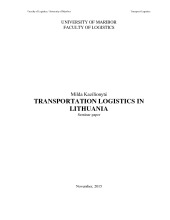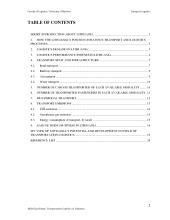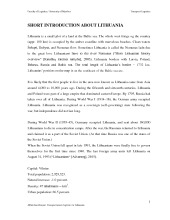Transportation Logistics In Lithuania



Transportation Logistics in Lithuania.
Ethnic Origins: 83.5% Lithuanians, 6.7% Polish, 6.3% Russians and 3.5% other nationalities.
Lithuania domestic LPI. It uses 4 major determinants of overall logistics performance to measure performance: infrastructure, services, border procedures and time, supply chain reliability. To begin, let us discuss Lithuania’s environment and institutions. From the survey appears that respondents say that rail transport rates are high or very high and the quality of infrastructure of railways are low or even very low. However, 9 in 10 respondents maintain that competence and quality of roads, maritime transport, freight forwarders, custom agencies and custom brokers is high or very high, it is a good thing I believe. Continuing about efficiency of clearance and delivery of imports and exports, all respondents say that it is clear often or nearly always! And of course I must notice that customs clearance procedures or other official procedures, trade and transport infrastructure and telecommunications and IT infrastructure have improved a lot since 2011.
Transport split and infrastructure are very good indicators that describe how country is developed its opportunities to explicate logistics activities. For example, if country has a great developed roads infrastructure in each modality, it means that the logistics processes are running successfully there. Lithuania has opportunity to use all modes of transportation so in this part of seminar paper I am going to discuss transport split and infrastructure for each modality in Lithuania.
In Lithuania road transport is very good displayed. Road transport is the most important and most developed modality so far. In Lithuania, we distribute roads to few categories:
Highways – these are the most intensive and the most used roads, especially for international cargos transshipments. There are 1784 km of highways in Lithuania, all of them are national significance and all are paved. Roads marked “E“ matches with international road passageways. It includes 6 transit routes:
E272 – Klaipėda-Vilnius (the biggest and the most used highway in Lithuania), IXD passageway.
Regional roads – total length is 14727 km of them. They are also national significance. 38 percent is paved, 62 percent – gravel. In total Lithuania has 21603 km national significance roads and 80 percent of cargos and passengers are transported through them.
Local roads – length is 42158 km and as we can see this number is double bigger than national significance roads but most of them are gravel roads.
City roads – or city streets roads, its length is 4882 km and the condition are very good.
The first railway in Lithuania appeared 1861 it was rail branch to Konigsberg from St. Peterbourgh-Warsaw railway. Nowadays railways route map is on image (Picture no 2). Railway stations in brown are the main ones. From the illustration it seems that the railway network is quite rare but it is very important for international transportation from Europe to Asia, especially to Russia. Lithuania has a problem with railways – different rail road tracks. During the World War II in Lithuania was 1524 mm railway track (Russian), and about 60 km of NGR (750 mm). However, now in Lithuania dominates European railway tracks (1433 mm).
















